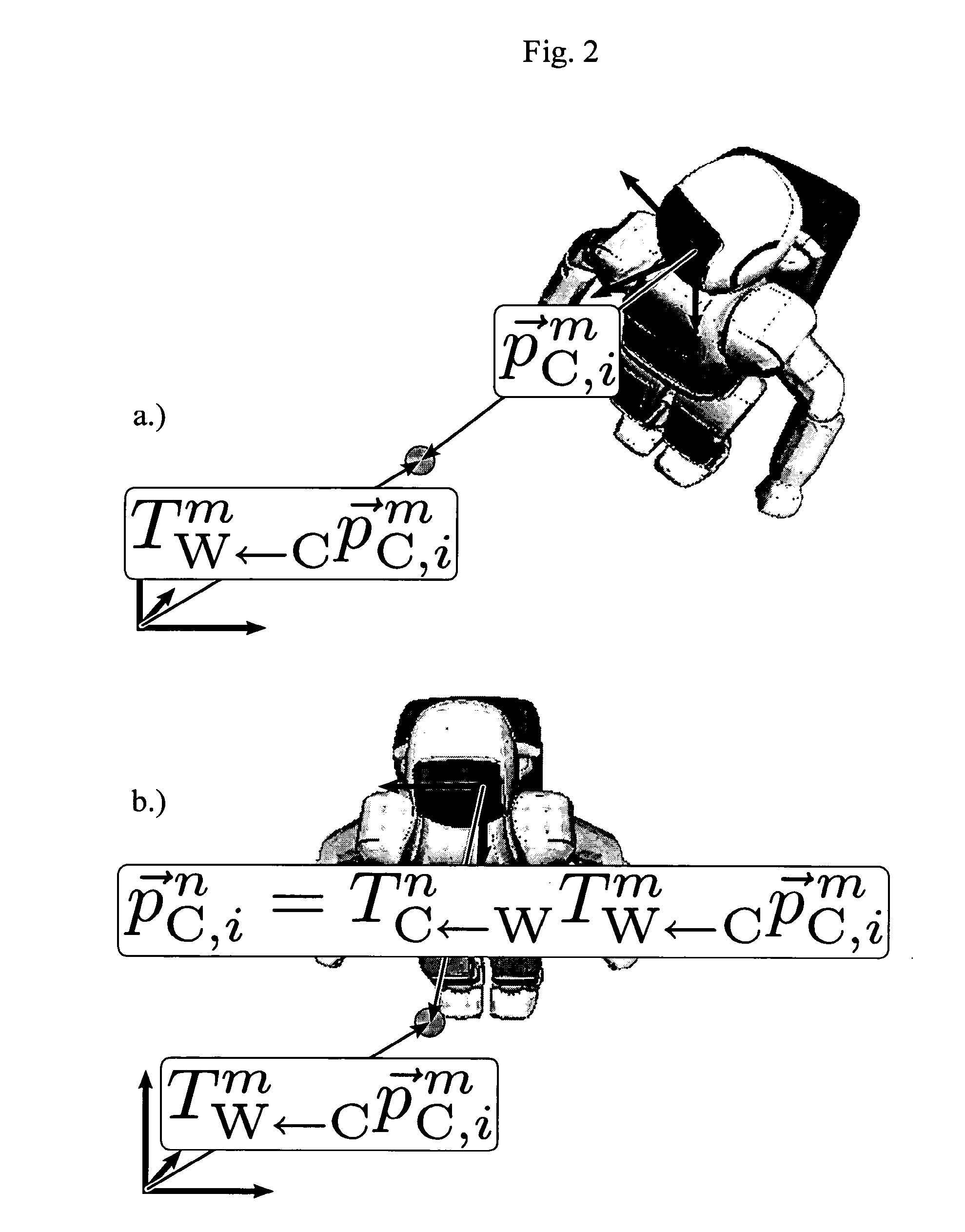Estimating objects proper motion using optical flow, kinematics and depth information
a technology of depth information and object motion, applied in image data processing, instruments, character and pattern recognition, etc., can solve the problems of not being able to achieve the effect of autonomously acting robots in dynamic scenes, not being able to simplify the assumption about the environment, and not being able to cope properly
- Summary
- Abstract
- Description
- Claims
- Application Information
AI Technical Summary
Benefits of technology
Problems solved by technology
Method used
Image
Examples
Embodiment Construction
[0025]FIG. 1 shows an overview of a system according to the embodiments of the present invention:
[0026]In a first step the forward kinematics are used to compute the movement of the camera occurring in the time-interval from m to n=m+1. Combining this with the depth information from binocular disparity, one may estimate where a static point in the image at time m moved due to ego-motion (EM) and obtain the ego-motion-flow (EMF). Hence, by knowing where a point in the image at time n originated from, the ego-motion (EM)-effect may be compensated by moving the point back to its original position in a second step, resulting in an image freed from EM-effects. Afterwards this image may be used for a calculation of the optical flow (OF) measured relative to the ego-motion-flow (EMF). This step-by-step movement estimation allows the reduction of the optical flow's (OFs) search-range which does not only reduce computational time but also decreases possible ambiguities in the optical flow (O...
PUM
 Login to View More
Login to View More Abstract
Description
Claims
Application Information
 Login to View More
Login to View More - R&D
- Intellectual Property
- Life Sciences
- Materials
- Tech Scout
- Unparalleled Data Quality
- Higher Quality Content
- 60% Fewer Hallucinations
Browse by: Latest US Patents, China's latest patents, Technical Efficacy Thesaurus, Application Domain, Technology Topic, Popular Technical Reports.
© 2025 PatSnap. All rights reserved.Legal|Privacy policy|Modern Slavery Act Transparency Statement|Sitemap|About US| Contact US: help@patsnap.com



